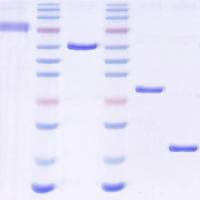Micropropagation of Globe Artichoke (Cynara cardunculus L. var. scolymus)
互联网
794
The globe artichoke (Cynara cardunculus L. var. scolymus ) is a perennial plant cultivated in the Mediterranean region and the Americas for its edible young flower heads. Although vegetative propagation by offshoots or by “ovoli” (underground dormant axillary buds) has been the primary method of propagation, the potential for the diffusion of diseases and the phenotypic variability can be very high. The propagation of this species by axillary shoot proliferation from in vitro-cultured meristems produces systemic pathogen-free plants and a higher multiplication rate as compared to that obtained by conventional agamic multiplication. Axillary shoot proliferation can be induced from excised shoot apices cultured on Murashige and Skoog agar solidified medium supplemented with various concentrations of cytokinins and auxins, depending on genotype. For the production of virus-free plants, meristems, 0.3–0.8 mm long are excised from shoot apices and surface sterilized. The transfer of artichoke microshoots to a medium lacking cytokinins or with low cytokinin concentration is critical for rooting. Adventitious roots develop within 3–5 weeks after transfer to root induction MS medium containing NAA or IAA at various concentrations. However, in vitro rooting frequency rate is dependent on the genotype and the protocol used. Acclimatization of in vitro microshoots having 3–4 roots is successfully accomplished; plantlets develop new roots in ex vitro conditions and continue to grow.








